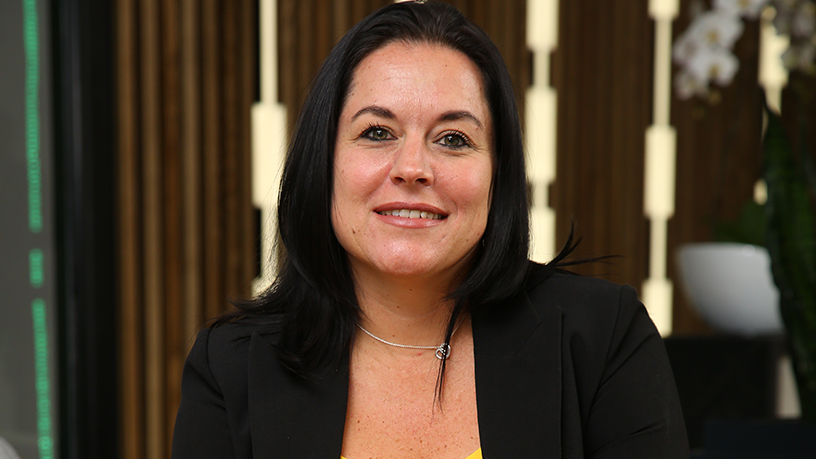Animal tracking is among the oldest forms of science in recorded history, its origins dating back tens of thousands of years.
By Mandy Duncan, country manager for HPE Aruba Networking South Africa
Despite its importance to understanding the world around us, trackers have long struggled with issues like incomplete records or poor connectivity in the field.
These trackers are collecting precious data that can help conservation efforts, and, as such, they need access to real-time information and historical records.
This information is particularly pertinent, given the rate at which climate disasters are threatening the survival of at-risk species. Trackers need to be able to quickly identify signs of animal life, like paw prints, droppings, or trail paths, and seamlessly communicate with others in the field. This real-time connectivity is critical to the future of this ancient art form.
It sounds simple, but what actually is animal tracking?
Tracking is more than just watching animals move from place to place. It requires the knowledge and skill to recognize, interpret, and follow signs of animal life. Most crucially, trackers must be able to know what the animals are doing without seeing them. Trackers are looking for three key signs: What does this animal eat? What habitat does it prefer? Where is it going and why?
There are two key components of tracking. There is “track & sign identification,” which is the study of signs left by invertebrates, amphibians, birds, reptiles, and mammals. The second component is what’s known as “trailing”: following a set of tracks (trail) through the landscape over varying substrates for extended time periods, until the animal is found.
These foundational elements have been at the heart of tracking since its inception. Animal tracking began in Africa, with early humans relying on their memories of where they’ve seen animals to track their movements. This marked an early occasion where science was required to solve a necessity in life – finding food.
These early trackers displayed the remarkable abilities still needed today to be effective in the field – a good set of eyes, physically fit, endless curiosity, and a desire to think critically to solve a problem.
As the art form continued to evolve, trackers became increasingly more competent in maintaining records and sharing them with peers. There has been a remarkable surge in interest in tracking by nature enthusiasts, scientists, conservation managers, and citizen scientists over the last decade. This created networks of trackers that shared key information on animal behavior in local environments, such as migratory and feeding behaviours.
Through the advancements of modern-day technology like GPS tagging and digital photo sharing, trackers have become much more technologically competent. Today, trackers must be able to understand sophisticated analytic programs and use these systems to conceive new scenarios for animal behaviour.
The field does come with its own set of unique challenges. Oftentimes signs like tracks or droppings can be extremely similar among species and hard to differentiate. Trackers also run into issues of connectivity – causing challenges for recording species’ signs.
Given that many animal tracking efforts are around endangered wildlife, trackers are often working in remote areas with little to no network access. Without that connection, trackers can’t record and share information on the species in real time or communicate with others in the field.
While animal tracking is an ancient art, the number of skilled trackers has been declining over the years. But with the decline in trackers and the added challenges of lack of connectivity in remote locations and hurdles for real-time data sharing, there are limits to what can be done.
For these reasons, Alex Van den Heever, GM of the Tracker Academy, looked for a technology partner that could help. After talking with multiple solution providers, they decided to partner with HPE due to the breadth of our technology solutions and the power of what we are able to offer.
Van den Heever engaged with the HPE team to formulate the requirements for the project and map out what we could do together. This resulted in the creation of an AI-powered application that allows animal trackers in Africa to digitally record wildlife data.
The project brought together network connectivity and positioning, along with AI/ML analytics capabilities and a platform to seamlessly connect all the pieces. Through tight collaboration across multiple technology groups within HPE, we delivered a functional prototype of the application to the Tracker Academy in just two weeks.
From there, the team started work on a version built for general consumption. Today, we are excited to say the first generation of the application is ready to release for student use. Not only are we looking forward to valuable feedback to enable us to evolve the application over time, but the images created by the students will also increase the size of the data lake and further improve the accuracy of results.
Technology truly is one of our most valuable tools for impacting positive change. I believe that technology has the ability to be a force for good, driving our conservation efforts and more. In this case, taking the vision of a small team in South Africa and adding the creativity and collaboration of multiple teams across the global enterprise that is HPE, we brought ideas, skills, and expertise together to create a new application that will have positive effects on our world for years to come.

